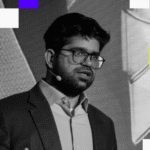Duolingo is restructuring parts of its workforce as it shifts toward becoming an “AI-first” company, according to an internal memo from CEO and co-founder Luis von Ahn that was later shared publicly on the company’s LinkedIn page.
The memo outlines a series of planned changes to how the company operates, with a particular focus on how artificial intelligence will be used to streamline processes, reduce manual tasks, and scale content development.
Duolingo will gradually stop using contractors for work that AI can take over. The company will also begin evaluating job candidates and employee performance partly based on how they use AI tools. Von Ahn said that headcount increases will only be considered when a team can no longer automate parts of its work effectively.
“Being AI-first means we will need to rethink much of how we work. Making minor tweaks to systems designed for humans won’t get us there,” von Ahn wrote. “AI helps us get closer to our mission. To teach well, we need to create a massive amount of content, and doing that manually doesn’t scale.”
One of the main drivers behind the shift is the need to produce content more quickly, and Von Ahn says that producing new content manually would take decades. By integrating AI into its workflow, Duolingo has replaced processes he described as slow and manual those that are more efficient and automated.
The company has also used AI to develop features that weren’t previously feasible such as an AI-powered video call feature, which aims to provide tutoring to the level of human instructors. According to von Ahn, tools like this move the Duolingo platform closer to its mission – to deliver language instruction globally.
The internal shift is not limited to content creation or product development. Von Ahn said most business functions will be expected to rethink how they operate and identify opportunities to embed AI into daily work. Teams will be encouraged to adopt what he called “constructive constraints” – policies that push them to prioritise automation before requesting additional resources.
The move echoes a broader trend in the tech industry. Shopify CEO Tobi Lütke recently gave a similar directive to employees, urging them to demonstrate why tasks couldn’t be completed with AI before requesting new headcount. Both companies appear to be setting new expectations for how teams manage growth in an AI-dominated environment.
Duolingo’s leadership maintains the changes are not intended to reduce its focus on employee well-being, and the company will continue to support staff with training, mentorship, and tools designed to help employees adapt to new workflows. The goal, he wrote, is not to replace staff with AI, but to eliminate bottlenecks and allow employees to concentrate on complex or creative work.
“AI isn’t just a productivity boost,” von Ahn wrote. “It helps us get closer to our mission.”
The company’s move toward more automation reflects a belief that waiting too long to embrace AI could be a missed opportunity. Von Ahn pointed to Duolingo’s early investment in mobile-first design in 2012 as a model. That shift helped the company gain visibility and user adoption, including being named Apple’s iPhone App of the Year in 2013. The decision to go “AI-first” is framed as a similarly forward-looking step.
The transition is expected to take some time. Von Ahn acknowledged that not all systems are ready for full automation and that integrating AI into certain areas, like codebase analysis, could take longer. Nevertheless, he said moving quickly – even if it means accepting occasional setbacks – is more important than waiting for the technology to be fully mature.
By placing AI at the centre of its operations, Duolingo is aiming to deliver more scalable learning experiences and manage internal resources more efficiently. The company plans to provide additional updates as the implementation progresses.
(Photo by Unsplash)
See also: AI in education: Balancing promises and pitfalls
Want to learn more about AI and big data from industry leaders? Check out AI & Big Data Expo taking place in Amsterdam, California, and London. The comprehensive event is co-located with other leading events including Intelligent Automation Conference, BlockX, Digital Transformation Week, and Cyber Security & Cloud Expo.
Explore other upcoming enterprise technology events and webinars powered by TechForge here.
Read the full article here















